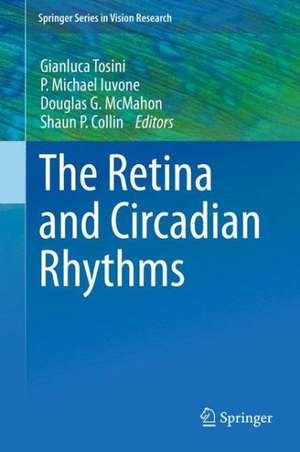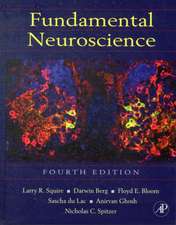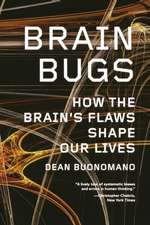The Retina and Circadian Rhythms: Springer Series in Vision Research, cartea 1
Editat de Gianluca Tosini, P. Michael Iuvone, Douglas G. McMahon, Shaun P. Collinen Limba Engleză Hardback – 9 ian 2014
| Toate formatele și edițiile | Preț | Express |
|---|---|---|
| Paperback (1) | 948.05 lei 43-57 zile | |
| Springer – 23 aug 2016 | 948.05 lei 43-57 zile | |
| Hardback (1) | 949.13 lei 43-57 zile | |
| Springer – 9 ian 2014 | 949.13 lei 43-57 zile |
Preț: 949.13 lei
Preț vechi: 1157.47 lei
-18% Nou
Puncte Express: 1424
Preț estimativ în valută:
181.67€ • 197.40$ • 152.70£
181.67€ • 197.40$ • 152.70£
Carte tipărită la comandă
Livrare economică 21 aprilie-05 mai
Preluare comenzi: 021 569.72.76
Specificații
ISBN-13: 9781461496120
ISBN-10: 1461496128
Pagini: 248
Ilustrații: VIII, 238 p. 50 illus., 33 illus. in color.
Dimensiuni: 155 x 235 x 17 mm
Greutate: 0.55 kg
Ediția:2014
Editura: Springer
Colecția Springer
Seria Springer Series in Vision Research
Locul publicării:New York, NY, United States
ISBN-10: 1461496128
Pagini: 248
Ilustrații: VIII, 238 p. 50 illus., 33 illus. in color.
Dimensiuni: 155 x 235 x 17 mm
Greutate: 0.55 kg
Ediția:2014
Editura: Springer
Colecția Springer
Seria Springer Series in Vision Research
Locul publicării:New York, NY, United States
Public țintă
ResearchCuprins
1. Introduction.- 2. Fundamental Retinal Circuitry for Circadian Rhythms.- 3. Circadian photoreception: from phototransduction to behaviour.- 4. Role of Melatonin and Dopamine in the Regulation of Retinal Circadian Rhythms.- 5. Circadian Organization of the Vertebrate Retina.- 6. Rhythmicity of the Retinal Pigment Epithelium.- 7. Retinal Circadian Rhythms in Mammals Revealed Using Electroretinography.- 8. Circadian Clock and Light Induced Retinal Damage.- 9. Circadian Rhythms and Vision in Zebrafish.- 10. Circadian Modulation of the Limulus Eye for Day and Night Vision.- 11. Molluscan Ocular Pacemakers: Lessons Learned.
Notă biografică
About the Editors:
Gianluca Tosini is Professor and Chair of the Department of Pharmacology at Morehouse School of Medicine, Atlanta. P. Michael Iuvone is Professor and Director of Research in the Department of Ophthalmology at Emory University School of Medicine, Atlanta. Douglas G. McMahon is Professor of Biological Sciences and Pharmacology, Associate Director for Education and Training Vanderbilt Brain Institute, and Director of Graduate Studies in Neuroscience at Vanderbilt University, Nashville. Shaun P. Collin is Professor, Deputy Director of the Oceans Institute and Head of the Neuroecology Group at University of Western Australia, Crawley.
Gianluca Tosini is Professor and Chair of the Department of Pharmacology at Morehouse School of Medicine, Atlanta. P. Michael Iuvone is Professor and Director of Research in the Department of Ophthalmology at Emory University School of Medicine, Atlanta. Douglas G. McMahon is Professor of Biological Sciences and Pharmacology, Associate Director for Education and Training Vanderbilt Brain Institute, and Director of Graduate Studies in Neuroscience at Vanderbilt University, Nashville. Shaun P. Collin is Professor, Deputy Director of the Oceans Institute and Head of the Neuroecology Group at University of Western Australia, Crawley.
Textul de pe ultima copertă
The retina plays a critical role in the organization of the circadian system by synchronizing the brain’s central clock with the external day through transduction of the daily light/dark cycle. However, the substantial variation in luminance imposed on the retina between day and night also poses a challenge to its role as a sensory tissue – how is it possible to faithfully encode the enormous dynamic range of luminance that can exceed 10 orders of magnitude? The Retina and Circadian Rhythms summarizes the knowledge accumulated over the last 30 years about the organization of the retinal circadian clock in many different species, concentrating on the roles that this circadian system plays in retinal function.
About the Series:
The Springer Series in Vision Research is a comprehensive update and overview of cutting edge vision research, exploring, in depth, current breakthroughs at a conceptual level. It details the whole visual system, from molecular processes to anatomy, physiology and behavior and covers both invertebrate and vertebrate organisms from terrestrial and aquatic habitats. Each book in the Series is aimed at all individuals with interests in vision including advanced graduate students, post-doctoral researchers, established vision scientists and clinical investigators.The series editors are N. Justin Marshall, Queensland Brain Institute, The University of Queensland, Australia and Shaun P. Collin, Neuroecology Group within the School of Animal Biology and the Oceans Institute at the University of Western Australia.
About the Series:
The Springer Series in Vision Research is a comprehensive update and overview of cutting edge vision research, exploring, in depth, current breakthroughs at a conceptual level. It details the whole visual system, from molecular processes to anatomy, physiology and behavior and covers both invertebrate and vertebrate organisms from terrestrial and aquatic habitats. Each book in the Series is aimed at all individuals with interests in vision including advanced graduate students, post-doctoral researchers, established vision scientists and clinical investigators.The series editors are N. Justin Marshall, Queensland Brain Institute, The University of Queensland, Australia and Shaun P. Collin, Neuroecology Group within the School of Animal Biology and the Oceans Institute at the University of Western Australia.
Caracteristici
Provides a comprehensive review of the retinal circadian rhythmicity and photoreception A unique publication for a special topic course in neurobiology for post-docs, upper level undergraduate or graduate courses A useful tool for clinicians and healthcare providers about the daily changes in the retina and how these changes may influence treatment and outcome























